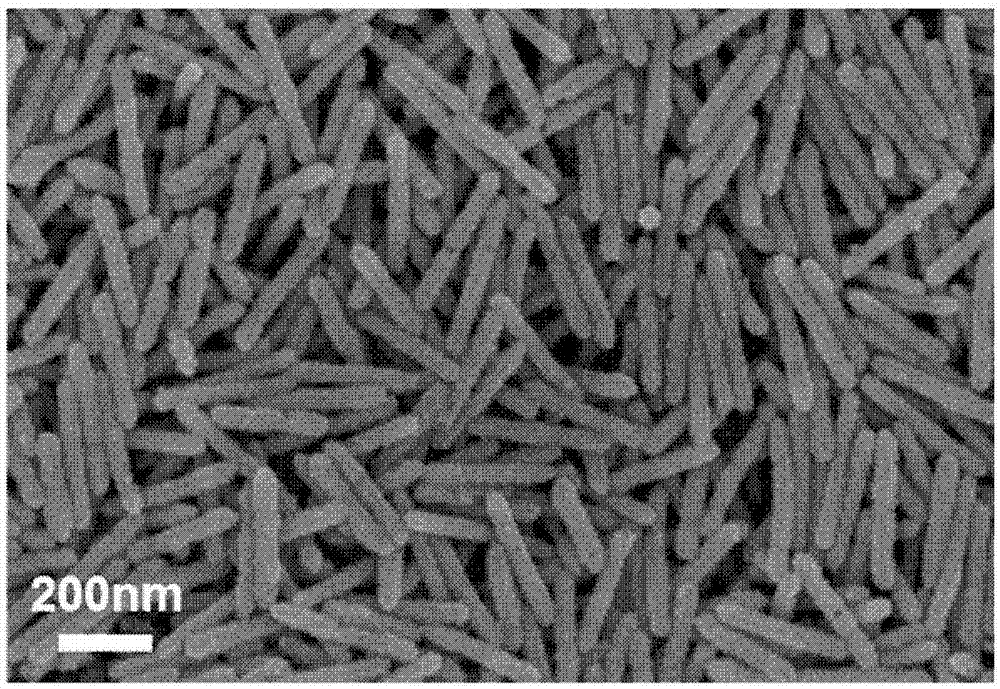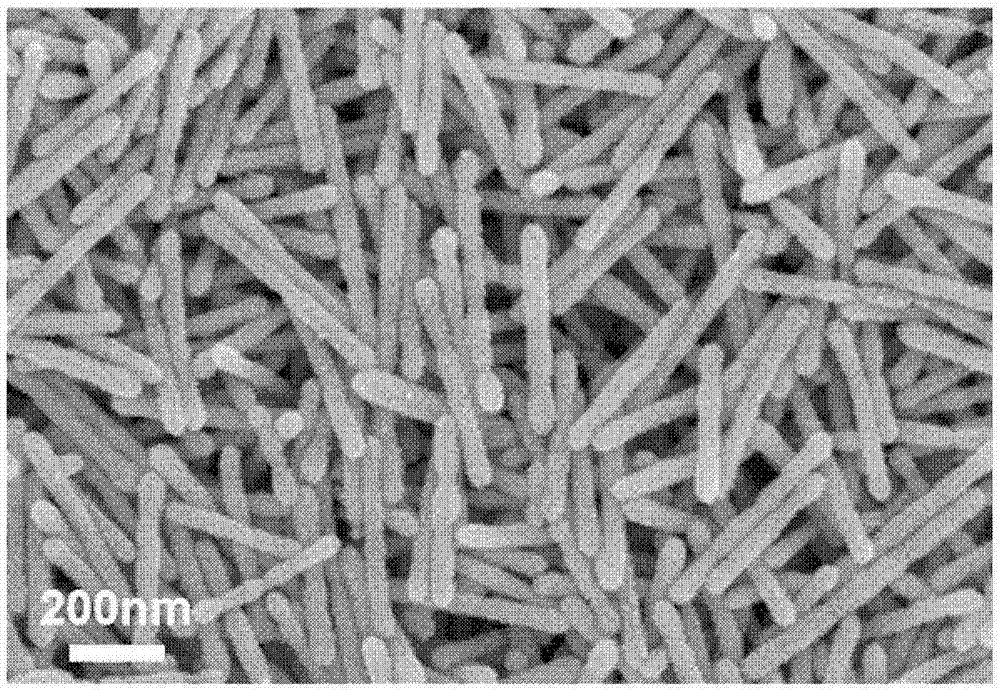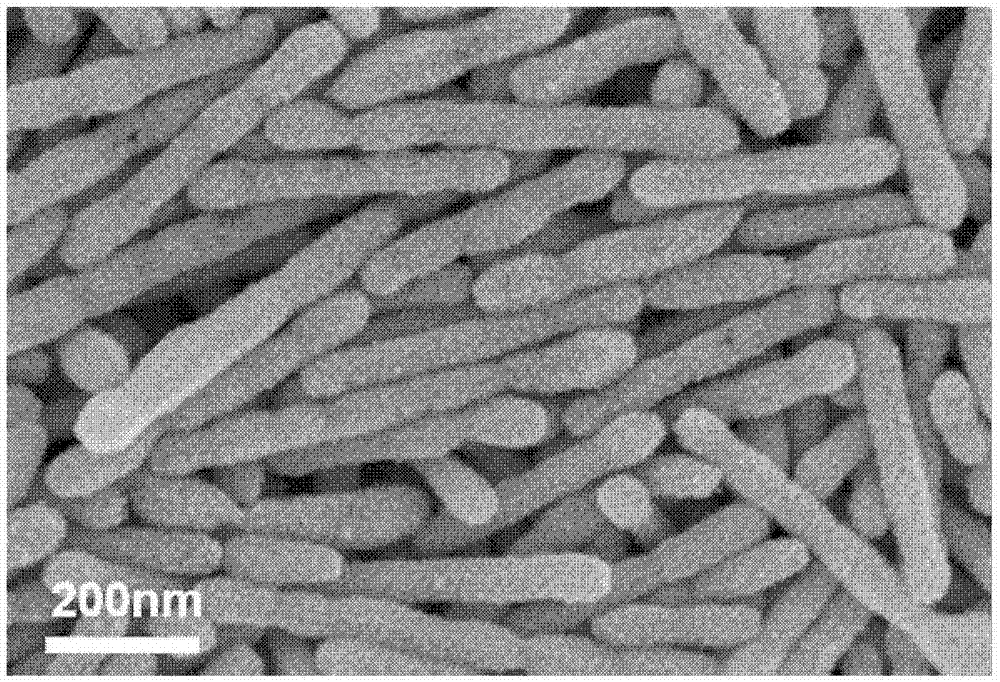Preparation methods of tin telluride nanorods and tin telluride based binary metal telluride nanorods
A binary metal, tin telluride-based technology, used in selenium/tellurium compounds, chemical instruments and methods, binary selenium/tellurium compounds, etc.
- Summary
- Abstract
- Description
- Claims
- Application Information
AI Technical Summary
Problems solved by technology
Method used
Image
Examples
preparation example Construction
[0037] In the preparation method of the present invention, the target product is directly synthesized through a simple chemical conversion method in a system using ethylene glycol as a solvent.
[0038] The basic process of the method of the present invention is as follows: firstly, in a suitable environment system, add a tellurium source and a surfactant to form a first mixture, and heat the first mixture to react to prepare the first mixture containing uniform tellurium nanorods. Two mixtures. Then, adding the tin source as a precursor and an optional second metal source to the second mixture, and raising the reaction temperature above 170° C. to react for a period of time, the corresponding metal telluride nanorod structure can be obtained.
[0039] The overall reaction mechanism of the method of the present invention is: the tellurium source is reduced to elemental tellurium under the action of hydrazine hydrate, and at this time the synthesis of nanorod morphology is cont...
Embodiment 1
[0053] Take a 50mL three-neck flask, add 0.2216g (1mmol) sodium tellurite, 1g polyvinylpyrrolidone and 30mL ethylene glycol into it, pass through argon protection and heat to 120°C under magnetic stirring, then immediately add 2mL of 98% hydrated Hydrazine, reaction 2h. Then add 0.2257 g (1 mmol) of stannous chloride dihydrate pre-dissolved in a small amount of ethylene glycol, heat up to 180 ° C, react for 2 h, wash once with water and twice with ethanol after cooling, and dry in vacuum at 60 ° C for 12 h.
[0054] The scanning electron microscope image of this nanorod is shown in figure 1 , XRD data see Figure 4 . At this time, the length of the nanorod is about 280 to 300 nm, and the diameter is about 50 nm.
Embodiment 2
[0056] Take a 50mL three-neck flask, add 0.2216g (1mmol) sodium tellurite, 1g polyvinylpyrrolidone and 30mL ethylene glycol into it, pass through argon protection and heat to 140°C under magnetic stirring, then immediately add 2mL of 98% hydrated Hydrazine, reaction 2h. Then add 0.2257 g (1 mmol) of stannous chloride dihydrate pre-dissolved in a small amount of ethylene glycol, heat up to 180 ° C, react for 2 h, wash once with water and twice with ethanol after cooling, and dry in vacuum at 60 ° C for 12 h.
[0057] The scanning electron microscope image of this nanorod is shown in figure 2 , XRD data see Figure 4 . At this time, the length of the nanorod is about 360 to 420 nm, and the diameter is about 50 nm.
PUM
| Property | Measurement | Unit |
|---|---|---|
| diameter | aaaaa | aaaaa |
| length | aaaaa | aaaaa |
| length | aaaaa | aaaaa |
Abstract
Description
Claims
Application Information
 Login to View More
Login to View More - R&D
- Intellectual Property
- Life Sciences
- Materials
- Tech Scout
- Unparalleled Data Quality
- Higher Quality Content
- 60% Fewer Hallucinations
Browse by: Latest US Patents, China's latest patents, Technical Efficacy Thesaurus, Application Domain, Technology Topic, Popular Technical Reports.
© 2025 PatSnap. All rights reserved.Legal|Privacy policy|Modern Slavery Act Transparency Statement|Sitemap|About US| Contact US: help@patsnap.com



